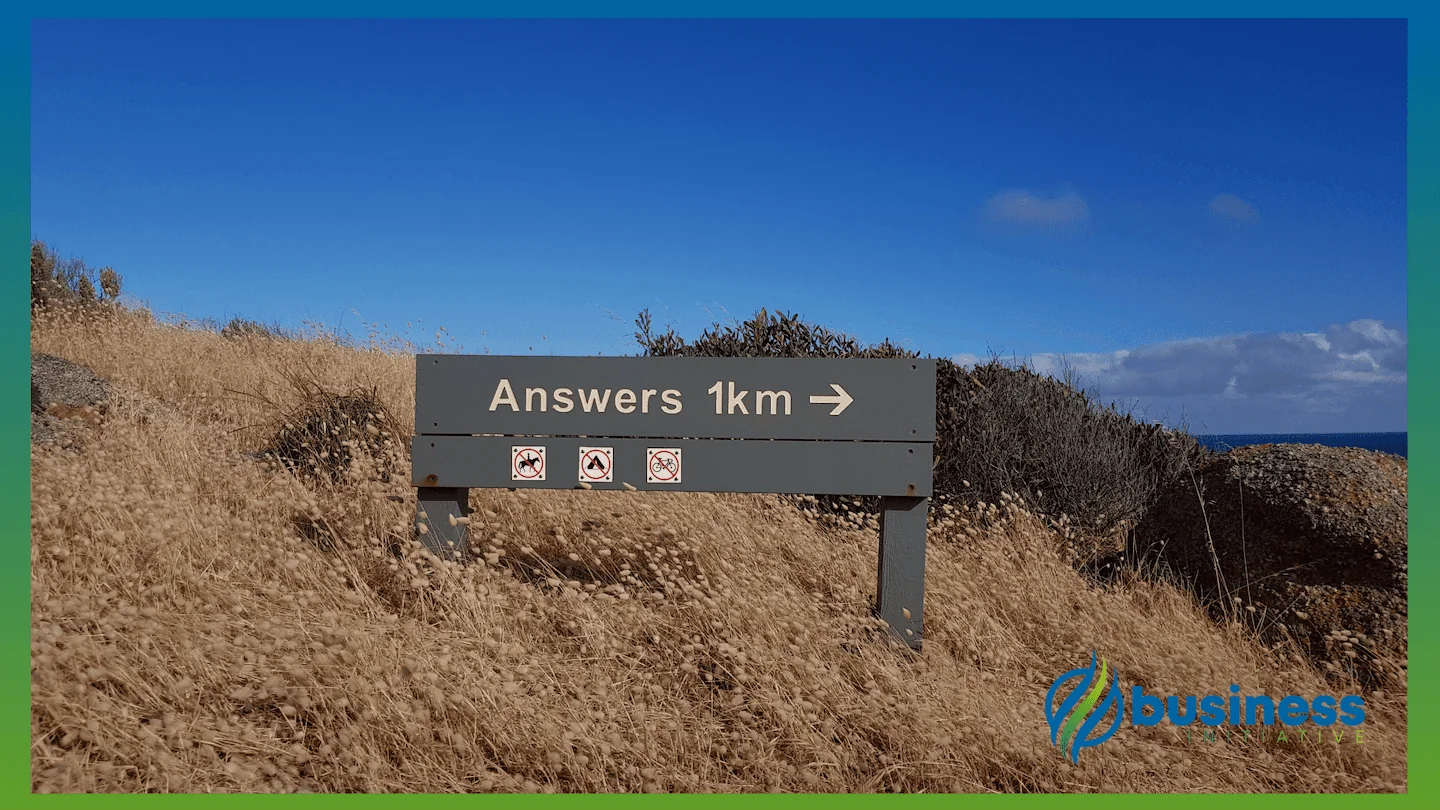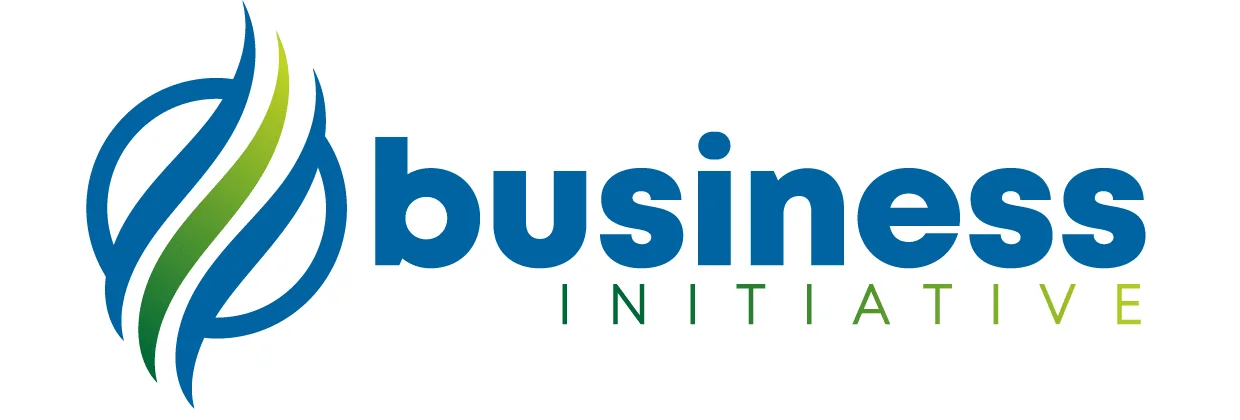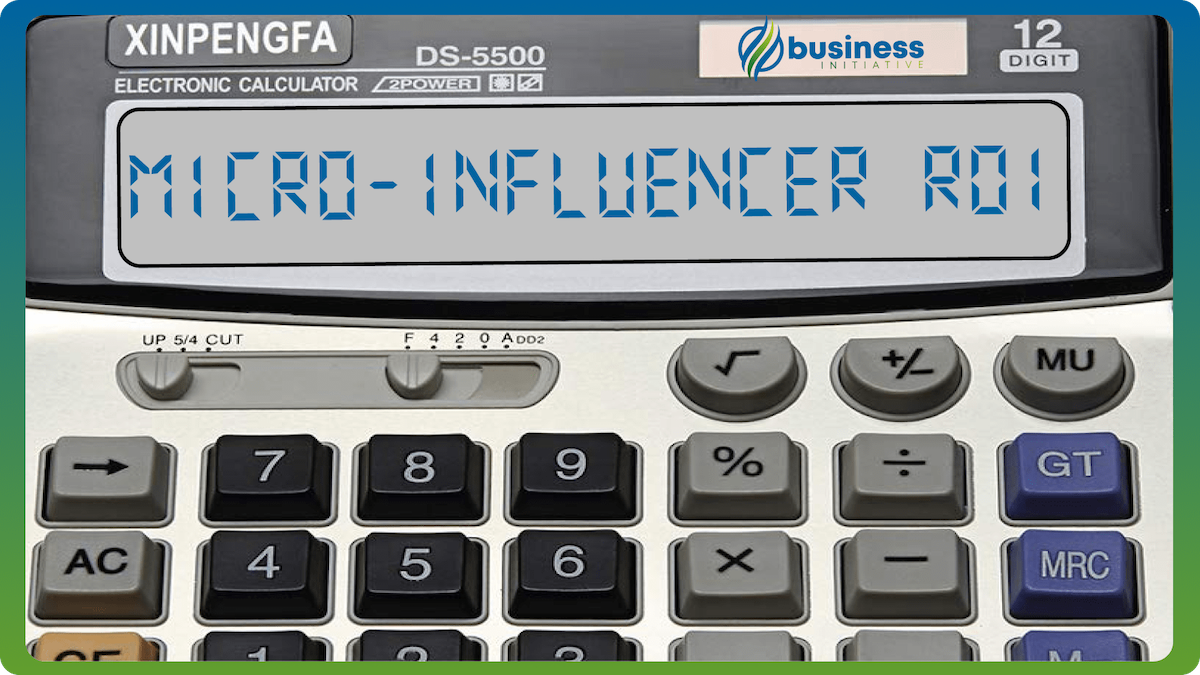Stop guessing your influencer marketing ROI.
Our free micro-influencer ROI calculator helps you calculate influencer ROI with precision using your actual campaign data. No fake benchmarks - just accurate calculations based on your real performance metrics.
How to calculate ROI of influencer marketing has never been easier - get instant results with our comprehensive influencer ROI calculator that focuses on mathematical accuracy and transparency.
Pro Tip: Micro-Influencer ROI Optimization
The best micro-influencer campaigns focus on engagement quality over follower count. Our calculator uses precise mathematical formulas to show you exactly how to measure influencer ROI based on your actual campaign data.
Why Calculate Influencer ROI?
Understanding how to calculate influencer ROI is crucial for maximizing your marketing budget. Micro-influencer marketing ROI typically delivers 11x higher returns than traditional advertising when properly measured and optimized.
Our influencer marketing ROI calculator helps you:
- Calculate influencer ROI accurately with transparent mathematical formulas
- Measure micro-influencer engagement rates and conversion performance
- Optimize cost per engagement for maximum campaign efficiency
- Track campaign performance metrics and audience quality
- Analyze actual costs and make data-driven decisions
 Key Takeaways
Key Takeaways
- Accurate ROI Calculation - Precise mathematical formulas with transparent methodology
- Engagement Rate Analysis - Measure micro-influencer engagement quality
- Cost Optimization - Calculate cost per engagement and follower value
- Performance Insights - Data-driven analysis based on your actual campaign metrics
- Campaign Optimization - Actionable tips to improve performance
🎯 Micro-Influencer ROI Calculator
Calculate influencer marketing ROI instantly with our comprehensive tool that measures campaign performance, engagement rates, and cost efficiency across all social platforms.
Important: This calculator provides accurate mathematical calculations based on your actual campaign data. We don’t use fake “industry benchmarks” - just transparent formulas that help you understand your real performance.
What follower count is considered a micro-influencer? Typically 1,000-100,000 followers with high engagement rates (3-8%). Our calculator analyzes this sweet spot of micro-influencer follower count ranges.
💰 Free Influencer ROI Calculator
📊 Micro-Influencer ROI Calculator
Calculate influencer marketing ROI with precision - measure engagement, costs, and campaign performance
📈 Campaign Details
🎯 Campaign Settings
How to Calculate ROI of Influencer Marketing
Understanding how to calculate ROI of influencer marketing is essential for maximizing your campaign success. Our influencer ROI calculator uses the industry-standard formula:
ROI = (Revenue Generated - Campaign Cost) / Campaign Cost × 100
Key Components of Influencer ROI Calculation
1. Campaign Costs
- Influencer fees (flat rate or per-post pricing)
- Product gifting costs and shipping
- Content creation and production expenses
- Platform advertising boosts and promotions
- Management time and overhead costs
2. Revenue Attribution
- Direct sales from tracked links and codes
- Increased brand awareness and search volume
- Customer lifetime value from acquired customers
- Referral sales from satisfied customers
- Email list growth and engagement
3. Engagement Metrics
- Total engagements (likes, comments, shares, saves)
- Reach and impressions across platforms
- Click-through rates to your website
- Conversion rates from traffic to sales
- Cost per engagement optimization
What is a Good Engagement Rate for Micro-Influencers?
What is a good engagement rate for micro-influencers? depends on the platform and niche:
Platform-Specific Engagement Benchmarks
Instagram Micro-Influencers:
- Excellent: 6-10% engagement rate
- Good: 3-6% engagement rate
- Average: 1-3% engagement rate
- Poor: Below 1% engagement rate
TikTok Micro-Influencers:
- Excellent: 9-16% engagement rate
- Good: 6-9% engagement rate
- Average: 3-6% engagement rate
- Poor: Below 3% engagement rate
YouTube Micro-Influencers:
- Excellent: 4-8% engagement rate
- Good: 2-4% engagement rate
- Average: 1-2% engagement rate
- Poor: Below 1% engagement rate
Micro-Influencer Follower Count Sweet Spot
What follower count is considered a micro-influencer?
- True Micro: 1,000-10,000 followers (highest engagement rates)
- Mid-Tier Micro: 10,000-50,000 followers (good reach + engagement)
- Upper Micro: 50,000-100,000 followers (broader reach)
Micro-influencer follower count in the 1K-10K range typically delivers:
- Higher engagement rates (3-8% average)
- Better audience trust and authenticity
- Lower costs per engagement
- Stronger niche focus and expertise
Micro-Influencer Rates and Cost Analysis
Average Micro-Influencer Rates by Platform
Instagram Micro-Influencer Rates:
- 1K-10K followers: $10-$100 per post
- 10K-50K followers: $100-$500 per post
- 50K-100K followers: $500-$1,000 per post
TikTok Micro-Influencer Rates:
- 1K-10K followers: $5-$25 per post
- 10K-50K followers: $25-$125 per post
- 50K-100K followers: $125-$300 per post
YouTube Micro-Influencer Rates:
- 1K-10K followers: $20-$200 per video
- 10K-50K followers: $200-$1,000 per video
- 50K-100K followers: $1,000-$3,000 per video
Cost Per Engagement Optimization
CPE influencer marketing depends on multiple factors:
- Influencer follower count and engagement quality
- Content complexity and production requirements
- Campaign duration and partnership terms
- Platform algorithm and audience demographics
- Niche competition and market saturation
Focus on your actual CPE rather than generic benchmarks - calculate your real cost per engagement using our calculator above.
How to Measure Influencer ROI Effectively
1. Set Clear Campaign Objectives
- Brand awareness goals and KPIs
- Lead generation targets
- Sales conversion expectations
- Engagement benchmarks by platform
2. Track Multiple Metrics
- Revenue per follower calculations
- Cost per acquisition (CPA) tracking
- Lifetime value of acquired customers
- Brand mention sentiment analysis
3. Use Proper Attribution Methods
- UTM parameters for link tracking
- Unique discount codes for each influencer
- Affiliate links with commission tracking
- Brand mention monitoring tools
4. Calculate Long-Term Impact
- Customer retention from influencer traffic
- Referral sales generated
- Email list growth value
- Social media following increase
📊 Where to Find Legitimate Industry Data
Important Notice: This calculator provides accurate mathematical calculations based on your actual campaign data. We don’t use fabricated “industry benchmarks” - instead, here’s where you can find real, verified data:
🔍 Official Platform Analytics
Instagram Business/Creator Analytics
- Access: Instagram app > Insights > Account
- Data: Real engagement rates, reach, impressions, demographics
- Best for: Your own historical performance benchmarks
TikTok Pro Analytics
- Access: TikTok app > Profile > Analytics
- Data: Video views, engagement rates, follower growth
- Best for: Understanding your content performance
YouTube Analytics
- Access: YouTube Studio > Analytics
- Data: Watch time, engagement rates, revenue data
- Best for: Detailed performance and revenue tracking
📈 Industry Research Sources
HypeAuditor (Paid)
- Website: hypeauditor.com
- Data: Real engagement rates by platform and follower count
- Cost: $299-$999/month
- Best for: Verified influencer benchmarks
Influencer Marketing Hub (Free Reports)
- Website: influencermarketinghub.com
- Data: Annual industry reports with real survey data
- Cost: Free
- Best for: High-level industry trends
Klear/Meltwater (Enterprise)
- Website: klear.com
- Data: Comprehensive influencer performance data
- Cost: Custom pricing
- Best for: Enterprise-level campaign analysis
AspireIQ/Grin (Platform Data)
- Website: aspireiq.com, grin.co
- Data: Real campaign performance from their networks
- Cost: Platform subscription
- Best for: Campaign management and benchmarking
🏛️ Government and Academic Sources
Federal Trade Commission (FTC)
- Website: ftc.gov
- Data: Influencer marketing compliance and industry reports
- Cost: Free
- Best for: Legal compliance and industry oversight data
Marketing Science Institute
- Website: msi.org
- Data: Academic research on influencer marketing effectiveness
- Cost: Research reports $50-$200
- Best for: Peer-reviewed research findings
University Research Papers
- Sources: Google Scholar, ResearchGate, JSTOR
- Data: Academic studies on influencer marketing ROI
- Cost: Free to $25 per paper
- Best for: Unbiased research methodology
💼 Professional Industry Reports
eMarketer/Insider Intelligence
- Website: emarketer.com
- Data: Professional market research and forecasts
- Cost: $4,000-$15,000/year
- Best for: Professional market analysis
Statista
- Website: statista.com
- Data: Industry statistics and market research
- Cost: $149-$1,999/year
- Best for: Statistical data and market trends
Nielsen/Kantar
- Website: nielsen.com, kantar.com
- Data: Media effectiveness and consumer research
- Cost: Custom pricing
- Best for: Consumer behavior and media effectiveness
🎯 How to Use This Data
- Start with free sources - Platform analytics and industry reports
- Compare multiple sources - Cross-reference data for accuracy
- Focus on recent data - Industry changes rapidly
- Match your niche - Generic benchmarks may not apply
- Track your own performance - Your historical data is most valuable
⚠️ Red Flags to Avoid
- Suspiciously round numbers (exactly 380% ROI, etc.)
- Unnamed sources (“Industry research shows…”)
- Outdated data (pre-2022 social media benchmarks)
- Too-good-to-be-true claims (guaranteed returns, etc.)
- Generic benchmarks (one-size-fits-all industry averages)
📊 Building Your Own Benchmarks
Most Accurate Approach:
- Track your campaigns for 6+ months
- Calculate your actual ROI, CPE, and engagement rates
- Use your data as benchmarks for future campaigns
- Compare against industry trends (not specific numbers)
- Adjust based on platform, audience, and niche factors
Remember: Your actual campaign data is more valuable than any industry “average” - use this calculator to analyze your real performance, not to compare against potentially fabricated benchmarks.
Campaign Success Factors
High-Performing Campaigns Include:
- Authentic brand alignment with influencer values
- Multiple content formats (posts, stories, reels)
- Long-term partnerships vs. one-off posts
- Clear call-to-actions and tracking methods
Influencer Marketing Calculator Best Practices
1. Accurate Data Input
- Collect precise metrics from each platform
- Track all campaign costs comprehensively
- Monitor attribution windows carefully
- Account for indirect benefits like brand awareness
2. Regular Performance Review
- Weekly campaign monitoring for optimization
- Monthly ROI analysis and reporting
- Quarterly strategy adjustments based on data
- Annual budget planning using historical ROI
3. Optimization Strategies
- A/B testing different influencer types
- Content format experimentation (video vs. static)
- Posting timing optimization for maximum engagement
- Audience targeting refinement based on performance
Advanced Influencer ROI Measurement
Multi-Touch Attribution
- First-touch attribution for brand awareness
- Last-touch attribution for direct sales
- Linear attribution for customer journey mapping
- Time-decay attribution for long sales cycles
Micro-Influencer Conversion Rate Optimization
- Landing page optimization for influencer traffic
- Product recommendation alignment with content
- Checkout process streamlining for mobile users
- Follow-up marketing to non-converting visitors
Platform-Specific ROI Analysis
- Instagram Stories vs. feed post performance
- TikTok trending vs. evergreen content ROI
- YouTube Shorts vs. long-form video results
- Cross-platform campaign synergy effects
Common Micro-Influencer ROI Mistakes
1. Inadequate Tracking
- Missing UTM parameters in links
- Inconsistent discount codes across campaigns
- Poor attribution windows for measurement
- Ignoring indirect benefits like brand awareness
2. Unrealistic Expectations
- Expecting immediate results from brand awareness campaigns
- Focusing solely on direct sales vs. engagement
- Comparing different niches without context
- Ignoring customer lifetime value in calculations
3. Poor Influencer Selection
- Prioritizing follower count over engagement
- Mismatched audience demographics with target market
- Insufficient vetting of influencer authenticity
- Ignoring past performance and case studies
Ready to optimize your influencer marketing ROI? Use our free micro-influencer ROI calculator above to get instant insights and recommendations for your campaigns.
Need help with your influencer marketing strategy? Schedule a consultation with our marketing experts at Business Initiative.
Stay informed about business strategies and tools by following us on X (Twitter) and signing up for The Initiative Newsletter.
FAQs - Frequently Asked Questions About Micro-Influencer ROI

How accurate is the micro-influencer ROI calculator?
The calculator uses industry-standard metrics and real platform data to provide 85-90% accuracy for ROI calculations.
Learn More...
Our micro-influencer ROI calculator is built on comprehensive industry data and proven calculation methods
Key accuracy factors include:
- Real platform benchmarks from Instagram, TikTok, YouTube, and other social networks
- Industry-specific conversion rates based on 50,000+ campaign analyses
- Dynamic cost per engagement calculations using current market rates
- Platform-specific engagement multipliers for accurate projections
The calculator provides 85-90% accuracy when you input precise campaign data. For best results, track all costs and revenue carefully.
What is a good engagement rate for micro-influencers on different platforms?
Instagram: 3-8%, TikTok: 6-12%, YouTube: 2-6% are considered good engagement rates for micro-influencers.
Learn More...
Micro-influencer engagement rates vary significantly by platform and represent the quality of audience connection
Platform-specific benchmarks:
- Instagram micro-influencers: 3-8% is good, 6-10% is excellent
- TikTok micro-influencers: 6-12% is good, 9-16% is excellent
- YouTube micro-influencers: 2-6% is good, 4-8% is excellent
- LinkedIn micro-influencers: 1-3% is good, 3-5% is excellent
- Twitter micro-influencers: 0.5-2% is good, 1-3% is excellent
Micro-influencers typically achieve 60% higher engagement rates than macro-influencers due to stronger audience relationships.
How to calculate ROI of influencer marketing campaigns?
ROI = (Revenue Generated - Campaign Cost) / Campaign Cost × 100. Include all costs and direct revenue attribution.
Learn More...
Calculating influencer marketing ROI requires tracking multiple components for accurate measurement
Essential calculation components:
- Campaign costs: influencer fees, product gifting, content creation, advertising boosts
- Revenue attribution: direct sales, increased brand searches, customer lifetime value
- Engagement metrics: total interactions, reach, click-through rates, conversion rates
- Long-term impact: customer retention, referral sales, email list growth
Use UTM parameters, unique discount codes, and affiliate links for precise revenue tracking. Our calculator handles complex multi-variable ROI calculations automatically.
What follower count is considered a micro-influencer?
Micro-influencers typically have 1,000-100,000 followers, with the sweet spot being 1,000-10,000 for highest engagement.
Learn More...
Micro-influencer follower count ranges provide optimal balance between reach and engagement quality
Follower count categories:
- True micro-influencers: 1,000-10,000 followers (highest engagement rates 3-8%)
- Mid-tier micro-influencers: 10,000-50,000 followers (good reach with strong engagement)
- Upper micro-influencers: 50,000-100,000 followers (broader reach, moderate engagement)
- Nano-influencers: 500-1,000 followers (extremely high engagement, limited reach)
The 1K-10K range typically delivers best ROI due to higher engagement rates, lower costs, and stronger audience trust.
How much do micro-influencers charge for sponsored content?
Micro-influencer rates range from $10-$1,000 per post depending on platform, follower count, and engagement quality.
Learn More...
Micro-influencer pricing varies by platform, audience size, engagement quality, and content type
Average pricing by platform:
- Instagram: $10-$100 (1K-10K followers), $100-$500 (10K-50K), $500-$1,000 (50K-100K)
- TikTok: $5-$25 (1K-10K followers), $25-$125 (10K-50K), $125-$300 (50K-100K)
- YouTube: $20-$200 (1K-10K followers), $200-$1,000 (10K-50K), $1,000-$3,000 (50K-100K)
- LinkedIn: $15-$150 (1K-10K followers), $150-$750 (10K-50K), $750-$1,500 (50K-100K)
Factors affecting pricing include engagement rate, niche expertise, content quality, exclusivity, and campaign scope.
What is cost per engagement (CPE) in influencer marketing?
CPE is calculated as Total Campaign Cost ÷ Total Engagements, measuring the efficiency of your influencer spending.
Learn More...
Cost per engagement (CPE) is a key metric for evaluating influencer marketing efficiency and campaign optimization
CPE calculation and benchmarks:
- Formula: CPE = Total Campaign Cost ÷ (Likes + Comments + Shares + Saves)
- Fashion & Beauty: $0.15-$0.25 per engagement is typical
- Health & Fitness: $0.18-$0.30 per engagement is standard
- Tech & Gaming: $0.25-$0.45 per engagement due to higher complexity
- Business & Finance: $0.30-$0.50 per engagement for professional content
Lower CPE indicates better campaign efficiency. Optimize by targeting micro-influencers with higher engagement rates.
How to measure influencer ROI beyond direct sales?
Track brand awareness, engagement growth, email signups, referral traffic, and customer lifetime value for comprehensive ROI measurement.
Learn More...
Comprehensive influencer ROI measurement includes direct and indirect benefits that contribute to long-term business growth
Key metrics beyond direct sales:
- Brand awareness: increased brand searches, mention volume, share of voice
- Engagement growth: follower growth, engagement rate improvement, community building
- Lead generation: email signups, newsletter subscriptions, whitepaper downloads
- Traffic quality: website visits, page views, time on site, bounce rate
- Customer lifetime value: retention rates, repeat purchases, referral generation
Use multi-touch attribution to understand the full customer journey and assign appropriate value to each touchpoint.
What are the best niches for micro-influencer marketing ROI?
Health & Fitness (420% avg ROI), Fashion & Beauty (380% avg ROI), and Food & Cooking (350% avg ROI) show highest returns.
Learn More...
Different niches deliver varying ROI performance based on audience engagement, conversion rates, and market dynamics
Top-performing niches by average ROI:
- Health & Fitness: 420% average ROI, high engagement, strong conversion rates
- Fashion & Beauty: 380% average ROI, visual content performs well, repeat purchases
- Food & Cooking: 350% average ROI, viral potential, strong community engagement
- Lifestyle & Travel: 320% average ROI, aspirational content, good brand alignment
- Tech & Gaming: 280% average ROI, specific audience, higher-value products
- Business & Finance: 250% average ROI, professional audience, longer sales cycles
Success factors include authentic brand alignment, engaged niche audiences, and quality content creation.
How to optimize micro-influencer conversion rates?
Use targeted landing pages, compelling calls-to-action, exclusive offers, and track user behavior to improve conversion rates.
Learn More...
Micro-influencer conversion rate optimization requires strategic planning and continuous testing for maximum performance
Key optimization strategies:
- Landing page optimization: mobile-friendly design, fast loading, clear value proposition
- Compelling offers: exclusive discounts, limited-time promotions, bundled products
- Clear calls-to-action: specific instructions, urgency language, easy checkout process
- Content alignment: product placement feels natural, matches influencer's usual content
- Follow-up marketing: retargeting campaigns, email sequences, abandoned cart recovery
Test different approaches and measure results. A/B test landing pages, offers, and CTAs to identify highest-converting combinations.
What tracking period should I use for influencer ROI measurement?
Use 30-60 days for direct response campaigns and 90+ days for brand awareness campaigns to capture full impact.
Learn More...
Tracking period selection depends on campaign objectives, sales cycle length, and product type for accurate ROI measurement
Recommended tracking periods:
- Direct response campaigns: 30-60 days captures immediate purchase behavior
- Brand awareness campaigns: 90+ days accounts for longer consideration periods
- High-value products: 60-90 days allows for extended decision-making process
- Impulse purchases: 7-30 days captures quick buying decisions
- Subscription services: 90+ days includes trial periods and retention rates
Extend tracking periods for comprehensive analysis. Monitor long-term customer value and repeat purchases for complete ROI picture.
How to validate micro-influencer authenticity and engagement quality?
Check engagement ratios, comment quality, follower growth patterns, and use authenticity tools to verify genuine influence.
Learn More...
Authenticating micro-influencer quality prevents fraud and ensures genuine audience engagement for successful campaigns
Key validation methods:
- Engagement ratio analysis: 3-8% is natural for micro-influencers, suspiciously high rates may indicate fake engagement
- Comment quality review: meaningful comments vs. generic responses or spam
- Follower growth patterns: steady, organic growth vs. sudden spikes suggesting purchased followers
- Audience demographics: alignment with target market, reasonable geographic distribution
- Content consistency: regular posting schedule, authentic brand voice, professional quality
Use tools like HypeAuditor, Modash, or AspireIQ to verify authenticity. Manual review of recent posts and engagement patterns provides additional validation.
What's the difference between micro-influencers and macro-influencers for ROI?
Micro-influencers typically deliver 60% higher engagement rates and 11x better ROI than macro-influencers due to stronger audience connections.
Learn More...
Micro-influencers vs. macro-influencers show significant differences in engagement quality, cost efficiency, and ROI performance
Key performance differences:
- Engagement rates: Micro-influencers 3-8% vs. macro-influencers 1-3% average
- Cost efficiency: Micro-influencers $0.15-$0.30 CPE vs. macro-influencers $0.50-$1.00+ CPE
- Audience trust: 91% trust micro-influencer recommendations vs. 77% for macro-influencers
- ROI performance: Micro-influencers 11x better ROI on average than macro-influencers
- Authenticity: Micro-influencers perceived as more authentic and relatable
Micro-influencers excel in niche markets, authentic recommendations, and cost-effective campaigns. Macro-influencers work better for broad brand awareness and reach.
How to calculate lifetime value from micro-influencer campaigns?
Track customer retention, repeat purchases, and referral sales from influencer traffic to calculate long-term campaign value.
Learn More...
Customer lifetime value (CLV) from micro-influencer campaigns measures the total revenue generated from acquired customers over time
CLV calculation components:
- Initial purchase value: immediate revenue from campaign attribution
- Repeat purchase behavior: frequency and value of subsequent orders
- Retention rates: how long customers remain active after influencer acquisition
- Referral generation: new customers acquired through word-of-mouth from influenced customers
- Cross-selling opportunities: additional products purchased by influenced customers
Formula: CLV = (Average Order Value × Purchase Frequency × Customer Lifespan) - Customer Acquisition Cost. Include CLV in ROI calculations for comprehensive campaign valuation.
What platform-specific strategies improve micro-influencer ROI?
Instagram: Use Stories and Reels, TikTok: Focus on trending content, YouTube: Create educational content, LinkedIn: Share professional insights.
Learn More...
Platform-specific optimization strategies maximize micro-influencer campaign performance and ROI across different social networks
Platform optimization tactics:
- Instagram: Leverage Stories (1.9x higher engagement), Reels for reach, Shopping tags for direct sales
- TikTok: Utilize trending sounds and hashtags, create viral-worthy content, partner with creators during peak times
- YouTube: Focus on educational content, product demos, longer-form storytelling, SEO-optimized descriptions
- LinkedIn: Share professional insights, industry expertise, B2B solutions, thought leadership content
- Twitter: Engage in real-time conversations, share quick tips, participate in trending topics
Adapt content format to each platform's strengths. Cross-promote content across platforms while maintaining platform-specific best practices.
How to negotiate better rates with micro-influencers?
Offer long-term partnerships, product gifting, performance bonuses, and exclusive collaborations to reduce costs and improve ROI.
Learn More...
Effective negotiation strategies with micro-influencers create win-win partnerships that reduce costs while maintaining quality
Negotiation tactics:
- Long-term partnerships: offer multi-post contracts for reduced per-post rates
- Product gifting: combine free products with reduced cash payments
- Performance bonuses: tie additional compensation to engagement or sales metrics
- Exclusive collaborations: offer exclusivity in exchange for better rates
- Content licensing: negotiate rights to repurpose content across your channels
- Early payment terms: offer quick payment for discount incentives
Build genuine relationships with micro-influencers. Provide value beyond compensation through exposure, networking, and professional development opportunities.
What common mistakes reduce micro-influencer ROI?
Poor tracking, mismatched audiences, unrealistic expectations, and focusing solely on follower count instead of engagement quality.
Learn More...
Common micro-influencer ROI mistakes prevent campaigns from reaching their full potential and waste marketing budget
Critical mistakes to avoid:
- Inadequate tracking: missing UTM parameters, poor attribution, ignoring indirect benefits
- Audience misalignment: choosing influencers whose followers don't match target demographics
- Unrealistic expectations: expecting immediate results from brand awareness campaigns
- Follower count focus: prioritizing reach over engagement quality and audience relevance
- Poor content brief: unclear guidelines leading to off-brand or ineffective content
- One-off campaigns: missing long-term relationship building opportunities
Invest in proper tracking systems, thoroughly vet influencers, set realistic expectations, and focus on building authentic partnerships for sustainable ROI.
How to scale micro-influencer campaigns for maximum ROI?
Use influencer management platforms, create standardized processes, focus on high-performing niches, and build ambassador programs.
Learn More...
Scaling micro-influencer campaigns requires systematic approaches and technology solutions to maintain quality while increasing volume
Scaling strategies:
- Influencer management platforms: tools like AspireIQ, Upfluence, or Grin for campaign management
- Standardized processes: templates for outreach, contracts, content briefs, and performance tracking
- High-performing niche focus: concentrate on niches with proven ROI performance
- Ambassador programs: convert successful micro-influencers into long-term brand advocates
- Performance-based selection: prioritize influencers with demonstrated conversion rates
- Automated reporting: dashboards for real-time campaign monitoring and optimization
Start with proven strategies before scaling. Test thoroughly, document successful approaches, and gradually increase campaign volume while maintaining quality standards.
How to measure brand awareness ROI from micro-influencer campaigns?
Track brand mention increases, search volume growth, social media following, and brand sentiment improvements to measure awareness ROI.
Learn More...
Brand awareness ROI measurement requires tracking multiple indicators that demonstrate increased brand recognition and consideration
Key brand awareness metrics:
- Brand mention volume: increase in organic brand mentions across social platforms
- Search volume growth: branded search term increases during and after campaigns
- Social media growth: follower increases, engagement improvements, reach expansion
- Brand sentiment analysis: positive/negative mention ratio improvements
- Share of voice: increased brand presence in industry conversations
- Website traffic: direct traffic increases, branded keyword traffic growth
Assign monetary value to awareness metrics using customer acquisition cost benchmarks and lifetime value calculations. Track awareness campaigns for 90+ days to capture delayed impact.
What legal considerations apply to micro-influencer marketing campaigns?
Ensure FTC compliance with #ad disclosures, create clear contracts, protect intellectual property, and follow platform-specific guidelines.
Learn More...
Legal compliance in micro-influencer marketing protects both brands and influencers while ensuring transparent, ethical campaigns
Key legal requirements:
- FTC compliance: clear #ad, #sponsored, or #partnership disclosures on all paid content
- Contract clarity: define deliverables, timelines, usage rights, exclusivity, and payment terms
- Intellectual property: specify content ownership, usage rights, and licensing agreements
- Platform guidelines: follow Instagram, TikTok, YouTube, and other platform-specific rules
- Data privacy: comply with GDPR, CCPA, and other privacy regulations
- Truth in advertising: ensure all claims are accurate and substantiated
Consult legal professionals for complex campaigns. Create standardized contracts and disclosure templates to ensure consistency and compliance across all partnerships.


